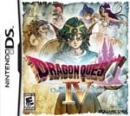padib said:
Nah, it doesn't work like that. The 3DS and WiiU are outliers in that they are consoles with sever design flaws which hampered sales. The WiiU is the most obvious one, it's popularity was at an all-time low and was essentially a failure, even admitted so by Reggie after he retired (in other words of course). No the reality is a mix of what you're saying and the potential of Nintendo consoles, when they are properly designed, and the sales potential of their IPs. The idea is that the handheld and home console line were capable of selling much more, but that the consoles that sold less did so due to a design problem or due to increased competition. Let me prove it:
The consoles that worked:
So, well guess what. The Switch fits in list #2. What does that mean? It means that the Switch is not only a sexy bombshell, but it also has the benefit of a combined library. Which means it has the potential to sell over 200m units in its lifetime. Proof of this is in the huge boost in sales of series like Animal Crossing, Smash and Mario Kart as compared to past generations. Games that used to sell 10m now sell 20m (Smash). Games that used to sell 8m now sell 17m (BotW). I removed everything else because I agreed with almost everything. |
Wait,wait, wait, the GBA didn't work?
GBA was a great success. It just got cut short as Nintendo panicked when Sony announced their PSP and rushed to release the DS. GBA wasn't killed by lack of success, but simply bad timing, meaning it got severely cut short. It was only on the market for 3.5 years before it's successor, the DS, came out.
Also, your assessment of the SNES is flawed in a myopic way. The NES had never had a monopoly either in the first place (it didn't have much to fear in the US or Japan, but fierce competition in Europe with the Sega Master System), but saying the SNES didn't work because it had competition is like saying the only reason why the PS3 only sold 80M would be because the 360 existed, excluding all it's other blunders. SNES did work, but just looking from a purely north american standpoint can make you easily think it was underwhelming in terms of sales, excluding several factors along the way.
Also, to get back on the NES, the videogame market only crashed in North America, it stayed very healthy in Europe and Japan. I mean, that's the very reason why Nintendo even could start selling the NES in the US in the first place, because their videogame market didn't crash.
The Nintendo eShop rating Thread: http://gamrconnect.vgchartz.com/thread.php?id=237454 List as Google Doc: https://docs.google.com/spreadsheets/d/1aW2hXQT1TheElVS7z-F3pP-7nbqdrDqWNTxl6JoJWBY/edit?usp=sharing
The Steam/GOG key gifting thread: https://gamrconnect.vgchartz.com/thread/242024/the-steamgog-key-gifting-thread/1/
Free Pc Games thread: https://gamrconnect.vgchartz.com/thread/248138/free-pc-games/1/




















